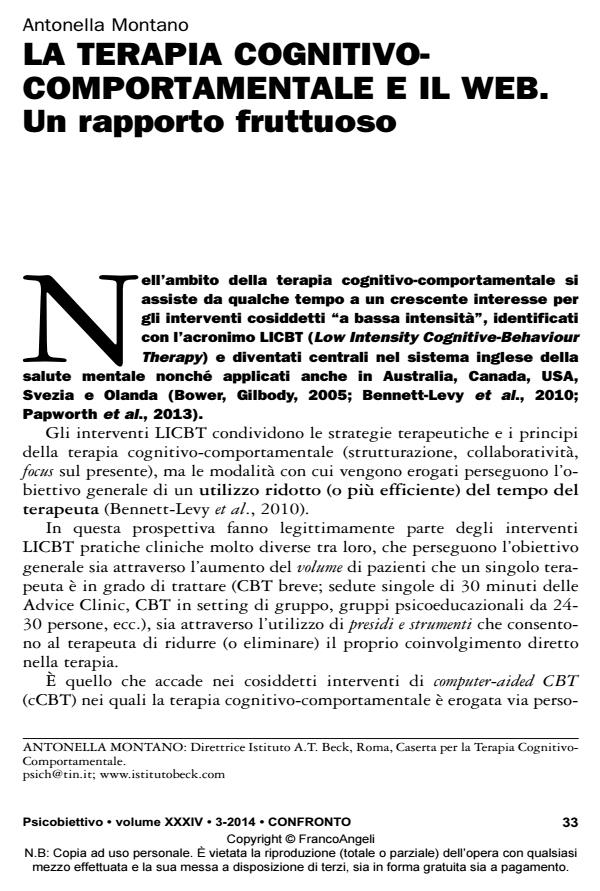Web and cognitive behaviour therapy. A fertile relationship
Journal title PSICOBIETTIVO
Author/s Antonella Montano
Publishing Year 2015 Issue 2014/3
Language Italian Pages 18 P. 33-50 File size 124 KB
DOI 10.3280/PSOB2014-003003
DOI is like a bar code for intellectual property: to have more infomation
click here
Below, you can see the article first page
If you want to buy this article in PDF format, you can do it, following the instructions to buy download credits

FrancoAngeli is member of Publishers International Linking Association, Inc (PILA), a not-for-profit association which run the CrossRef service enabling links to and from online scholarly content.
Starting from the cognitive-behavioral therapy paradigm of "low intensity", the author provides an overview of the therapeutic protocols that use communication technologies, collectively named computer-aided CBT (cCBT). In relation to the contact between therapist and patient the e-therapy CBT, the Internet delivered CBT (ICBT) and computerized CBT programs are described in depth. The author then focuses on the advantages and disadvantages of each of the protocols considered and outlines some possible future scenarios. In conclusion she describes the application of e-therapy via e-mail that is offered at the Institute she directs.
Keywords: Computer-Aided CBT; Low Intensity CBT; E-Therapy; Web- Based Therapy; Psychotherapy Online.
- Virtual Relationships and Systemic Practices in the Digital Era Maria Borcsa, Valeria Pomini, in Contemporary Family Therapy /2017 pp.239
DOI: 10.1007/s10591-017-9446-6
Antonella Montano, La terapia cognitivo-comportamentale e il web. Un rapporto fruttuoso in "PSICOBIETTIVO" 3/2014, pp 33-50, DOI: 10.3280/PSOB2014-003003